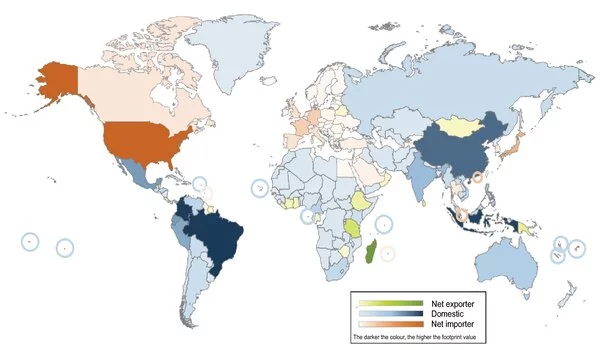As the 15th Conference of the Parties to the Convention on Biological Diversity (COP-15) approaches, international research has measured the impact of human consumption on the danger of species extinction.
According to the most recent Intergovernmental Science-Policy Platform on Biodiversity and Ecosystem Services (IPBES) assessment report, approximately 1 million species are already on the verge of extinction, with many going extinct within the next few decades.
The study, which included over 5,000 species from 188 nations, discovered that consumption in Europe, North America, and East Asia (such as Japan and South Korea) is predominantly responsible for species extinction risk in other countries. The Nombre de Dios Streamside Frog of Honduras and the Malagasy Giant Jumping Rat of Madagascar are among the species affected.
The study, published in Scientific Reports, was led by Ms. Amanda Irwin of the University of Sydney’s Integrated Sustainability Analysis research group and co-authored by Dr. Thomas Brooks, chief scientist of the International Union for Conservation of Nature (IUCN), and Dr. Juha Siikamäki, chief economist of the International Union for Conservation of Nature (IUCN).
The authors compare the biodiversity problem to the climate crisis, but with less public attention. “These problems are happening at the same time,” Ms. Irwin explained. “The next COP-15 will hopefully increase the visibility of our generation’s second human-driven environmental crisis—irreparable biodiversity loss—and our findings can provide vital insights into the role that global consumption plays as one of the drivers of this loss.”

Important findings
Consumption in 76 nations, predominantly in Europe, North America, and East Asia, is primarily responsible for the risk of extinction in other countries.
This extinction-risk footprint is driven by offshore consumption in 16 nations, mostly in Africa.
Domestic consumption is the most significant driver of the extinction-risk footprint in 96 countries—roughly half of those surveyed.
International trade accounts for 29.5% of the global extinction-risk footprint.
Consumption of goods and services from the food, beverage, and agriculture sectors accounts for 39% of the global extinction-risk footprint, followed by consumption of goods and services from the building sector (16%).
Ms. Irwin, a Ph.D. candidate, stated: “Because of the complexities of economic connections in our globalized society, purchasing a coffee in Sydney may contribute to biodiversity loss in Honduras. Even if we don’t see it, the choices we make on a daily basis have an impact on the natural world. “
“Everything we consume is drawn from nature, with raw materials turned into final products via a plethora of supply chain activities.” These interactions frequently have an immediate impact on species.
“The upcoming COP-15 will hopefully raise the profile of the other human-driven natural crisis of our generation—irreparable biodiversity loss—and our findings can provide valuable insights into the role that global consumption plays as one of the drivers of this loss.”
Ms Irwin said
This insight into how prevalently consumption patterns influence biodiversity loss across the globe is critical to informing ongoing international negotiations for nature, including the 15th Conference of the Parties to the Convention on Biological Diversity, which aims to finalize the post-2020 global biodiversity framework later this year, says co-author and IUCN chief economist Dr. Juha Siikamäki.
“The study’s finding that approximately 30% of the global extinction-risk footprint is embedded in international trade underscores the need to consider the responsibilities of different countries and all actors, including conservation financing, not only in the context of their national boundaries but also in the context of their international impacts.”
The activities that threaten species in a given location are often induced by consumption patterns in far-away locations, meaning that local interventions may be insufficient, said co-author Associate Professor Arne Geschke of the University of Sydney’s Integrated Sustainability Analysis research group.
Adequate interventions to address extinction risk in Madagascar, for example, where 66 percent of the extinction-risk footprint is exported, should differ from those undertaken in Colombia, where domestic consumption generates 93 percent of the extinction-risk footprint.

Concerning the study
Using data from the IUCN’s Red List of Threatened Species, the authors developed the non-normalized Species Threat Abatement and Restoration (nSTAR) metric as a measure of extinction risk.
They then used the global supply chain database Eora to link this extinction risk to worldwide consumption patterns, employing the methodology widely employed to calculate carbon footprints, of which the Integrated Sustainability Analysis research group is a world leader.
For 188 countries, an extinction-risk footprint was calculated by species and economic sector.
Associate Professor Arne Geschke previously co-authored Scientific Reports research demonstrating that international trade is a major driver of biodiversity problems.
The University of Sydney, IUCN, Newcastle University (UK), and the International Institute for Sustainability in Brazil collaborated on this new publication.





